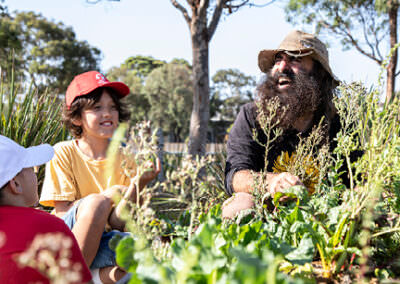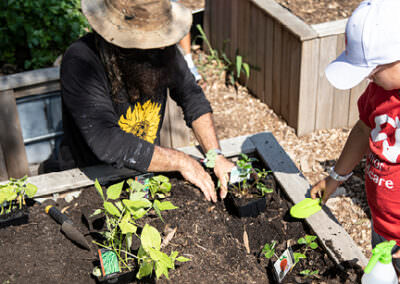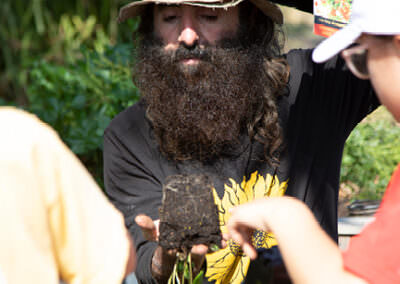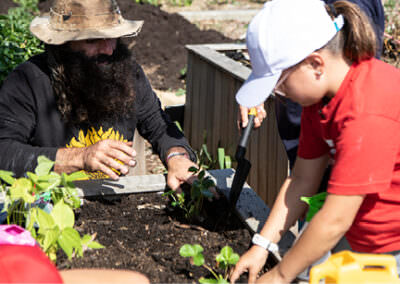
Creating a food garden: planting
Time Allocation: 30 - 40 minutes
Activity Level: Moderate
Introduction
Planting seedlings is one of the most satisfying tasks as it helps to bring your food garden to life relatively quickly. Understanding the best location and conditions for your plants, taking good care, and documenting what you plant will help to grow a productive garden. Advance preparation of your garden bed, being ready with suitable plants, and working in teams will help this be an effective and efficient activity.
Checklist
Instructions
 Step 1
Step 1
Plan
Children can plant fruit and vegetable seedlings and herbs into moist, well-prepared soil all year round. Planning is the key to success. Refer to a planting guide like the Gardenate app to help plan what you intend to grow and when. Are you planting something that people like to eat?
Go through your checklist to ensure you have all the materials you need.
Run through the plan with the children and outline the safety steps involved.
Plant and seed labels are your friend. They will guide you on how, where and how far apart to plant your seedlings. You can use a measuring tape, a stick or hand widths to help.
If you have enough space and plants, you can plan to have your seedlings mature at different times.
Space out the pots onto your bare bed and discuss where they may go. Use planting information and the plant labels to help guide the discussion.
Consider how much space your plant needs when it is fully grown. Will it shade other plants?
Where do you think these plants should go?
 Step 2
Step 2
Prepare
Fruits and vegetables grow best in rich, well-drained soil so preparing your garden bed is an important step. You may already have good conditions from building your no dig garden bed.
If using raised garden beds, you can prepare the soil in the garden beds. Dig the soil often to break up the clods (clumps), adding decomposed organic matter such as compost to improve the soil’s quality, drainage and moisture, and reducing the need to water.
To give the plants a head start, children can also add in a manure mix and well-rotted compost into the top 15cm of soil.
 Step 3
Step 3
Planting
You will need to obtain plants for your food garden. These can be started from seed, grown from cuttings, or purchased as mature plants.
Whilst you are waiting to plant, ensure that your seedlings are watered and in the shade, especially if it is a hot day. Overnight, the plants may need to be protected from pests so keep them under cover. If your seedlings have been grown indoors, they will need some ‘hardening off’. To help your plants acclimatise, you need to place the plants outdoors in small steps over a few days or weeks.
 Step 4
Step 4
Monitor and care
Now that you have completed your planting, use the activity sheet to draw a map and list your plants. Create rosters and tasks to share caring for your food plants with your Junior Landcare team.
Water all the crops to keep them moist on a regular basis. Tend to the garden by mulching and weeding regularly.
Refer to the Growing healthy plants using natural pesticides learning activity for guidance if you encounter sap-sucking insect damage on your food plants.
Extension Activity
Now that you have planted out your food garden, design labels to create signage for the garden and the plants. What information will be important on your label? How can you decorate and make your signs attractive?
Are there some plants that you can eat without growing in soil? Can you design a method to growing edible sprouts?